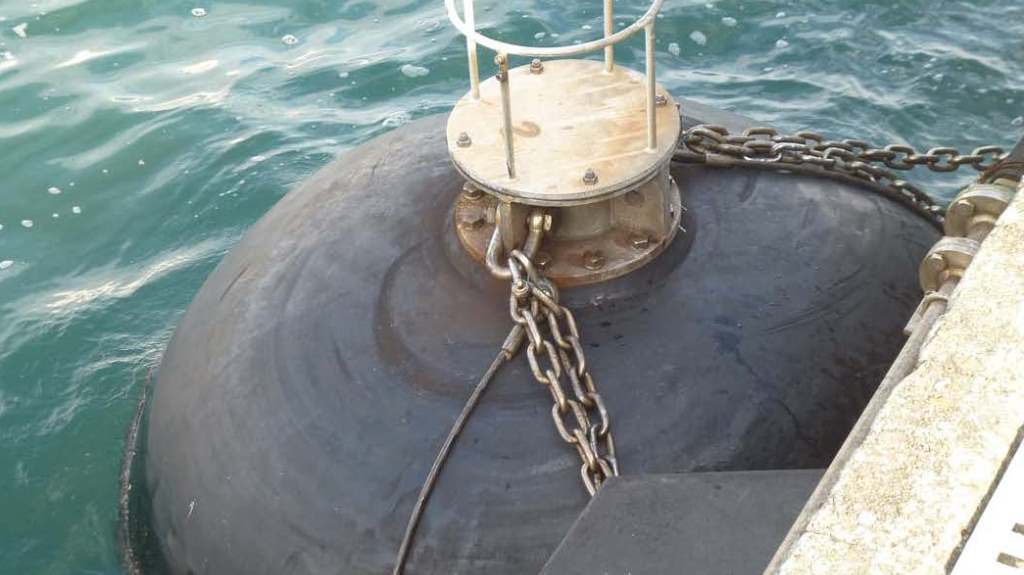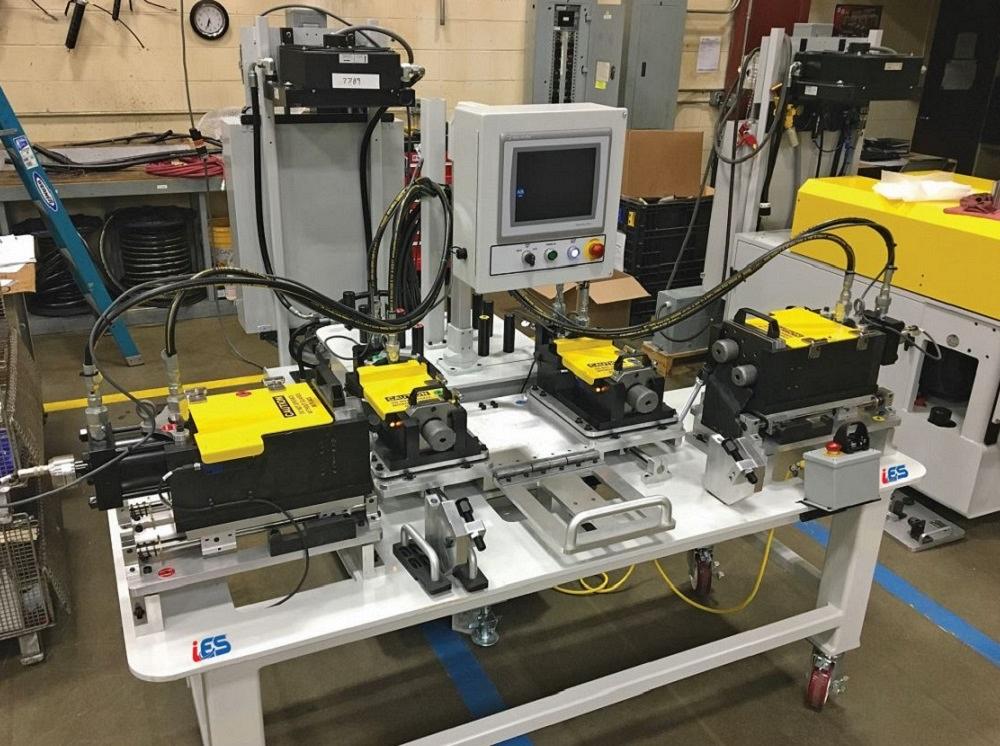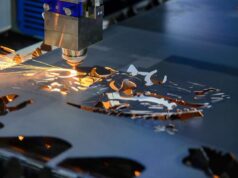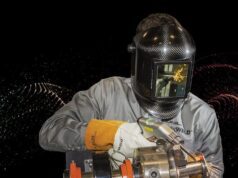
The future of industrial technology is here, and it’s called hydro-pneumatic technology. This revolutionary advancement is pushing the boundaries of what was previously believed to be possible in industry and manufacturing.
Hydro-pneumatic systems are designed to deliver high efficiency with minimal energy consumption, resulting in improved productivity and cost savings for businesses across all industries. In addition to the economic benefits, these systems also provide a safer working environment for employees while reducing environmental impact.
With its promise of increased efficiency and performance, hydro-pneumatic technology is quickly becoming an essential tool in many industrial operations around the world. In this article, we explore how advances in hydro-pneumatic technology have revolutionized modern industry by increasing productivity levels while minimizing costs and environmental impacts.
Enhanced Automation for Streamlined Production
Hydro-pneumatic technology has revolutionized industrial production processes, allowing manufacturers to enhance automation and streamline their operations. From automated robots that increase the speed of repetitive tasks to computer systems that monitor the progress of a project in real-time, these advances have allowed businesses to become more efficient and productive.
With hydro-pneumatic technology, machines can move with greater precision and accuracy than ever before — even at high speeds. This improved efficiency translates into shorter production cycles and reduced waste materials.
Furthermore, by integrating sensors into machinery for monitoring purposes, operators can detect problems quickly and make adjustments accordingly without disrupting the entire process, saving valuable resources such as time and money while improving safety conditions. The possibilities are endless when it comes to utilizing hydro-pneumatic technology for enhanced automation in streamlined production; its use is only limited by one’s imagination.
Expanded Applications of Hydro-Pneumatic Technology

Hydro-pneumatic technology has become increasingly popular in the industrial sector over recent years. This is due to its ability to reduce energy costs and improve efficiency, while also providing a reliable way of controlling hydraulic systems.
As such, it has been used in a wide variety of applications across different industries, from material handling to automotive production. But now, with further advancements in hydro-pneumatic technology, even more possibilities are being unlocked.
The first application that can benefit from these developments is water treatment. Hydro-pneumatic systems can be used for filtration and purification processes by drawing out impurities from contaminated sources using pressurized gas or liquid streams.
This allows for faster and more efficient treatment compared to traditional methods such as sedimentation tanks or sand filters. Additionally, this method does not require any additional chemicals for the process which makes it both cost-effective and safer than other conventional techniques.
Another area where hydro-pneumatics have seen major advancements in renewable energy generation through wave power plants; is an innovative approach towards utilizing ocean waves as a source of energy production without damaging marine life or ecosystems around them due to their low-impact nature when operating at full capacity during stormy weather conditions on seaside coasts all over the world.
By controlling the flow of air into special turbines placed under sea level using pressure valves operated by pneumatic actuators linked directly to control units that monitor wave activity above surface levels they can produce electricity safely and reliably with minimal environmental disruption allowing us access previously untapped resources like never before!
Finally, one last application worth mentioning here is automation within manufacturing operations: thanks largely to its precise motion capabilities combined with high-speed accuracy rate achieved via electronic valve control modern industry robots are now able to utilize automated pneumatic tools powered by compressed air pressure almost instantly transforming entire factories into highly productive facilities capable producing large batches goods quickly efficiently without human intervention necessary!
In conclusion, these three examples serve only as snapshots highlighting some possible uses for advanced hydro-pneumatic technologies: countless other potential applications exist today making this powerful tool increasingly indispensable within industry sectors worldwide!
Innovative Methods to Reduce Cost and Increase Performance
Hydro-pneumatic technology has revolutionized the industrial landscape, pushing boundaries and making the production process more efficient. New methods are continually emerging to take advantage of this cutting-edge technology and reduce costs while increasing performance.
One example is the use of pressurized air instead of traditional hydraulic fluid for power transmission. By replacing oil with compressed air, companies can benefit from improved energy efficiency, increased safety features, and reduced maintenance costs.
Additionally, for those who operate in hazardous environments or require extreme precision in their operations, hydro-pneumatic systems offer a much higher level of control than standard hydraulic systems do. Another innovative method is using an inexpensive combination of sensors combined with sophisticated software algorithms to monitor equipment performance levels in real-time while also providing valuable feedback about system health and potential issues that may arise during operation.
This allows businesses to quickly identify any problems before they escalate beyond repairable limits – enabling them to make adjustments on the fly without compromising productivity or safety standards.
Finally, businesses are taking advantage of advances in automation and robotics as well as artificial intelligence (AI) technologies such as machine learning (ML) by incorporating these tools into their processes – reducing labor costs while simultaneously improving production quality through increased accuracy and speedier response times.
AI-powered machines can learn from previous experiences which helps optimize operations even further down the line when dealing with complex tasks like assembly lines or automated product testing facilities.
In summary, hydro-pneumatic technology offers new ways for businesses to reduce costs while at the same time maximizing performance levels through advanced automation techniques coupled with intelligent monitoring solutions that help detect potential problems early on before they become major issues – leading to greater long-term savings over time!
Cutting Edge Solutions for Complex Industrial Processes

Hydro-pneumatic technology has been revolutionizing industrial processes for years. It offers complex, cutting-edge solutions to a variety of difficult challenges in the industrial sector.
With its ability to rapidly control and adjust automated systems with incredible precision, hydro-pneumatic technology is helping push boundaries and increase efficiency within multiple industries. For example, it can provide dynamic control over hydraulic systems used in manufacturing plants or refine the accuracy of pneumatic devices on construction sites.
In addition to providing accurate results at high speeds, hydro-pneumatic technology also allows for more efficient use of resources while still maintaining safety standards throughout the entire process. This makes it an invaluable tool in many production lines where time and money are two major factors driving performance metrics.
Moreover, this form of automation often requires less maintenance than traditional methods as well as decreased energy costs associated with operational functions – yet another benefit that helps keep the industry running smoothly without sacrificing quality or reliability. Overall, hydro-pneumatic technology provides a powerful way forward for complex industrial processes looking to improve their capabilities without compromising operations or safety protocols.
By combining speed and accuracy with cost savings and minimal maintenance requirements, this innovative form of automation is sure to be a game changer in today’s increasingly competitive global market – offering cutting-edge solutions that will help businesses stay ahead of their competition while keeping operations running efficiently at all times!
Conclusion
The advancements in hydro-pneumatic technology are pushing the boundaries of industrial practices, leading to more efficient and cost-effective solutions for a variety of applications. From construction works to marine fender, hydro-pneumatic technology is enabling us to do more with less. As we continue to explore its potential, it is clear that this technology will have far-reaching implications for our society and our industries in the future.









